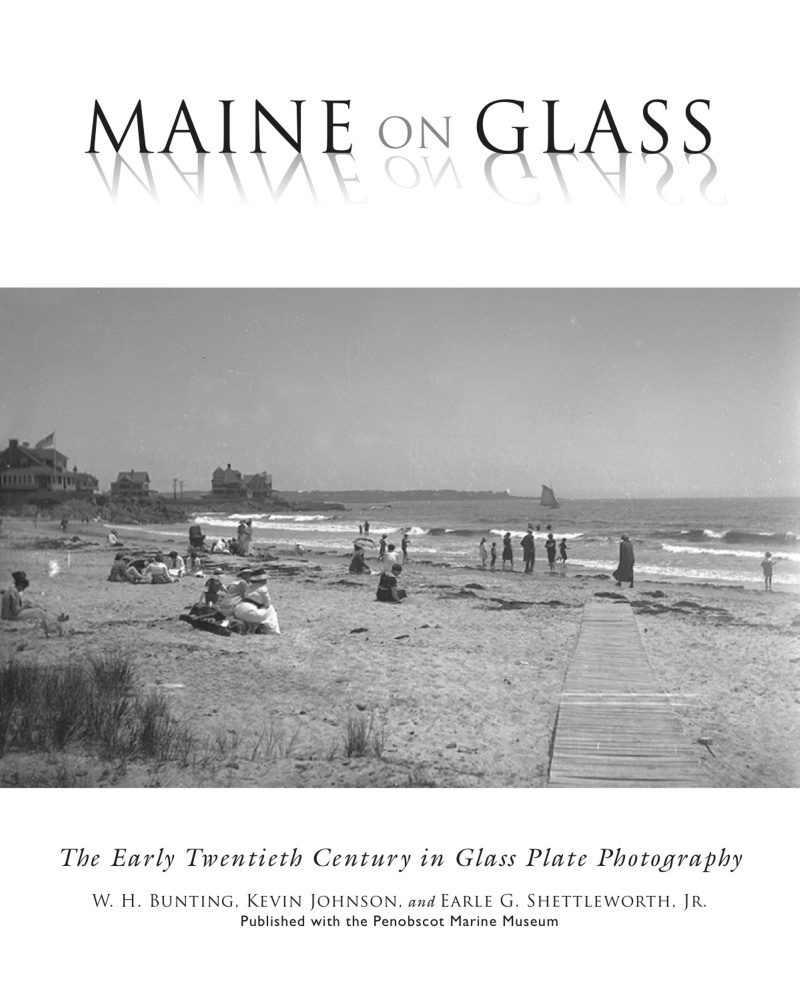The argument put forth by a trio of Maine historians in their beautiful new volume, “Maine on Glass,” is honest and to the point: “Nineteenth-century Maine, famed for its lumbering, shipbuilding, and seafaring, has attracted copious attention from historians, but early twentieth-century Maine has not. ‘Maine on Glass’ corrects that oversight, taking us from top to bottom of a big state in bustling times. Hitting the back roads in antique automobiles, slipping in and out of the decades between 1909 and the early 1950s, we visit boomtowns and migrant labor camps, people at work and play, farms and factories.”
Indeed, it is hard to think of much of anything left out.
To judge the visual quality of “Maine on Glass,” all the reader-observer need do is skim through the pages of this nicely designed book. Here one finds 200 select images not only of the usual camps, meeting houses, town libraries and mills, but of “sardine cottages” for seasonal workers in North Lubec, five “gents” lined up outside the Wytopitlock pool-room and barbershop, and the Caribou potato harvest with crews picking into ash baskets made by local Wabanaki craftspersons and cedar barrels made in local cooperages. One can also see the busy cornhuskers (men, women and children) in a Farmington canning factory. And there are roaring speedboats for “bored looking” swells, and Company B of the 5th Infantry crossing the Androscoggin River on a rope ferry at Rumford Point, probably just after World War I.
All of the images are from the glass plate photo archives of the Eastern Illustrating and Publishing Company of Belfast, now under the auspices of the Penobscot Marine Museum in Searsport.
Museum photo archivist Kevin Johnson provides the reader with a short, rock-solid history of the Eastern Illustrating postcard operation from 1909 to 1989. Johnson began working with the collection in 2007 at the Photographic Workshops in Rockland and now manages Penobscot Marine’s 200,000-glass-plate archive. Large, publicly consumed penny-post view collections, such as Eastern’s, once presented the face of Maine to the world. Preserving and examining those pictures is crucial and enlightening.
State Historian Earle G. Shettleworth, Jr. offers an equally cogent preface and an essay entitled “Belfast, Maine: A Center for Photography,” which shows how favorable postal regulations and a shift from German lithographic cards during and after World War I led to American “real photo post cards” conquering the market. Three nationally important card companies thrived in Belfast.
The third historian involved in “Maine on Glass” is the redoubtable W.H. Bunting, who describes Maine this way: “The state once known by its proud motto ‘Dirigo’ – I lead! – became ‘Vacationland’ a rustic, even quaint summer resort for vacationers from more advanced and prosperous states.”
Bunting writes that in the 20th century, apart from the intense period of Maine shipbuilding during World War II, “it was almost as though Maine had slipped into a fog bank.” The images included in this book help bring hte rest of the century to light.
Though all involved in the creation of this project are among the best in Maine, Bunting deserves special mention for his unique ability to pry documentary information out of photographs. Consider the photograph “East Pittston Haying,” which in most picture books might have elicited nothing but a short caption. The reader is told an enormous amount of fascinating information in three sweet paragraphs including, “Pitching on the last of the raked-up scatterings. The boy on top is packing down the load, which is built up from the borders. Hay was Maine’s biggest crop and also its most neglected, with the practice of selling hay rather than feeding stock blamed for a shortage of fertilizing manure.”
This is an enjoyable and readable book that can be relied upon by all.
William David Barry is a local historian who has authored/co-authored seven books, including “Maine: The Wilder Side of New England” and “Deering: A Social and Architectural History.” He lives in Portland with his wife, Debra, and their cat, Nadine.
Send questions/comments to the editors.



Success. Please wait for the page to reload. If the page does not reload within 5 seconds, please refresh the page.
Enter your email and password to access comments.
Hi, to comment on stories you must . This profile is in addition to your subscription and website login.
Already have a commenting profile? .
Invalid username/password.
Please check your email to confirm and complete your registration.
Only subscribers are eligible to post comments. Please subscribe or login first for digital access. Here’s why.
Use the form below to reset your password. When you've submitted your account email, we will send an email with a reset code.